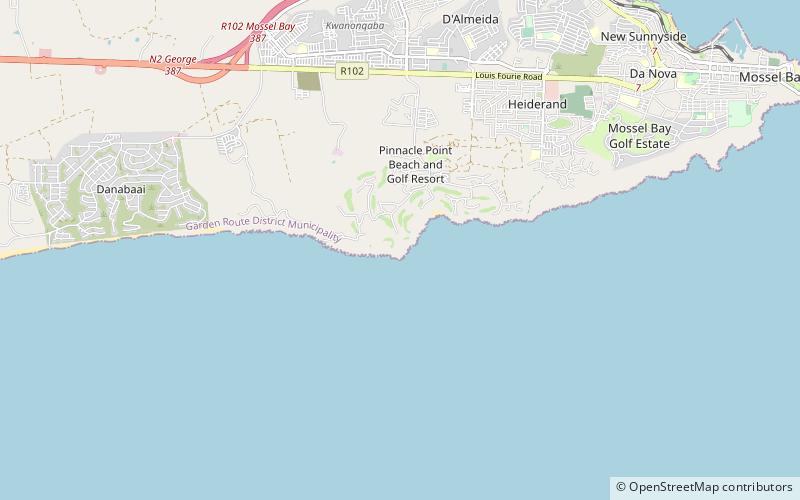Pinnacle Point


Facts and practical information
Nestled on the rugged coastline of South Africa's Western Cape, Pinnacle Point is an archaeological site of global significance, offering a window into the ancient behaviors of early Homo sapiens. Renowned for its complex of caves, this location has been pivotal in reshaping our understanding of human evolution and cultural development.
The caves at Pinnacle Point are particularly famous for yielding evidence of some of the earliest known behaviors associated with modern humans. Excavations have uncovered artifacts that suggest early technological innovation, including the use of complex tools and the earliest known use of heat treatment in the production of stone tools. These findings, dating back 164,000 years, have been instrumental in providing insights into the cognitive abilities of our ancestors.
Moreover, the site has provided evidence of the earliest known harvesting of marine resources, indicating a dietary breadth that included shellfish—a practice that points to the adaptability and ecological intelligence of early humans. The location's rich biodiversity and the abundance of resources it offered are believed to have played a crucial role in the survival and development of human communities during periods of climatic stress.
Pinnacle Point is not only an archaeological treasure but also a place of stunning natural beauty. The caves overlook the Indian Ocean, with panoramic views that have remained largely unchanged for tens of thousands of years. This continuity adds an evocative layer to the visitor experience, as one can stand at the very spot where our ancestors once gazed out over the sea.
Western Cape
Pinnacle Point – popular in the area (distance from the attraction)
Nearby attractions include: Bartolomeu Dias Museum Complex, Cape St. Blaize Lighthouse, Mossel Bay Yacht and Boat Club, White Shark Africa.




